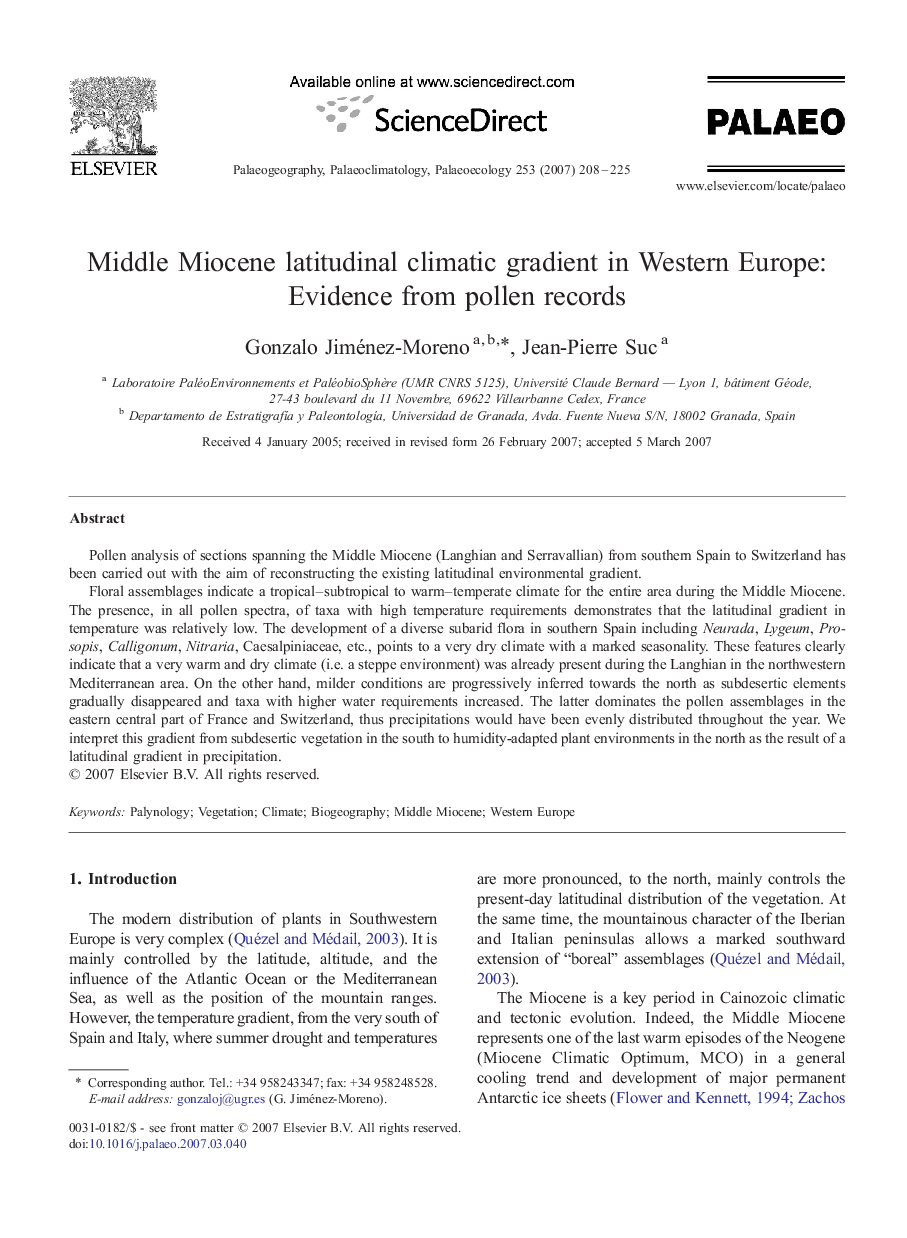| Article ID | Journal | Published Year | Pages | File Type |
|---|---|---|---|---|
| 6350755 | Palaeogeography, Palaeoclimatology, Palaeoecology | 2007 | 18 Pages |
Abstract
Floral assemblages indicate a tropical-subtropical to warm-temperate climate for the entire area during the Middle Miocene. The presence, in all pollen spectra, of taxa with high temperature requirements demonstrates that the latitudinal gradient in temperature was relatively low. The development of a diverse subarid flora in southern Spain including Neurada, Lygeum, Prosopis, Calligonum, Nitraria, Caesalpiniaceae, etc., points to a very dry climate with a marked seasonality. These features clearly indicate that a very warm and dry climate (i.e. a steppe environment) was already present during the Langhian in the northwestern Mediterranean area. On the other hand, milder conditions are progressively inferred towards the north as subdesertic elements gradually disappeared and taxa with higher water requirements increased. The latter dominates the pollen assemblages in the eastern central part of France and Switzerland, thus precipitations would have been evenly distributed throughout the year. We interpret this gradient from subdesertic vegetation in the south to humidity-adapted plant environments in the north as the result of a latitudinal gradient in precipitation.
Related Topics
Physical Sciences and Engineering
Earth and Planetary Sciences
Earth-Surface Processes
Authors
Gonzalo Jiménez-Moreno, Jean-Pierre Suc,
